You can also follow us now on our instagram account : https://www.instagram.com/gregoryleroyphoto/
We just acquired a rare set of Cuban early photography titled Album Panoramico de Yateras, Guantanamo, Isla de Cuba, fotografos : Maurice Hargous y Hermano.
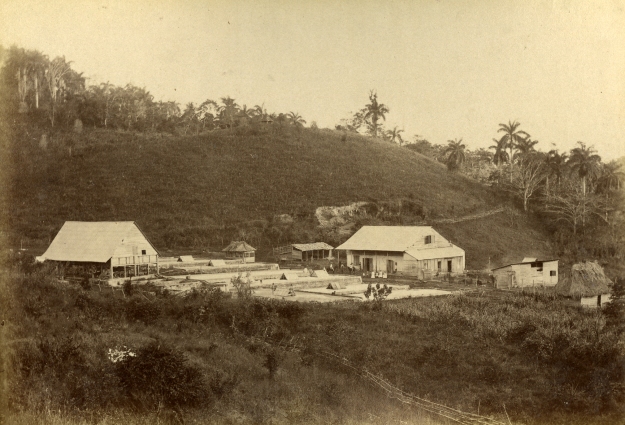
Cafetal l’Ermitage (owned by Henri Lescaille).
Maurice Hargous, born in Bayonne, France, in 1864, moved to Cuba in 1891, along with his brother Paul (born in 1868). Maurice settled in la Havana, while Paul opened a photographic studio in the Eastern province of Guantanamo. Both brothers left Cuba for Haïti in 1895. We can therefore easily date these photographs around 1892-1894.
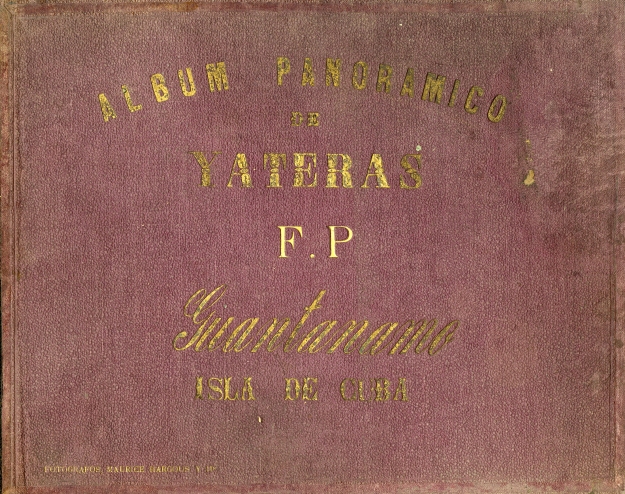
Cover of the album
Almost all the photographs are views of coffee plantations (cafetal in Spanish) from the lush and mountainous Yateras area, around 20 kilometers north-east of the city of Guantanamo.
Most of these cafetales were owned by French colonists, which would explain how this album ended up in Paris. Coffee growing in Eastern Cuba started at the beginning of the 19th century, as the Haitian revolution drove the French out of Hispanolia across the narrow Windward passage to Cuba. Most of them settled in the underdeveloped Guantanamo province. In 1854, the Yateras municipality had thirty-six cafetales, most of them owned by French families. This album was probably owned by a “F.P.”, most likely Fernand Pons, owner of the San Fernando plantation – the photograph of his cafetal is the first in the album…

Cafetal San Fernando, Fernand Pons on his horse ?
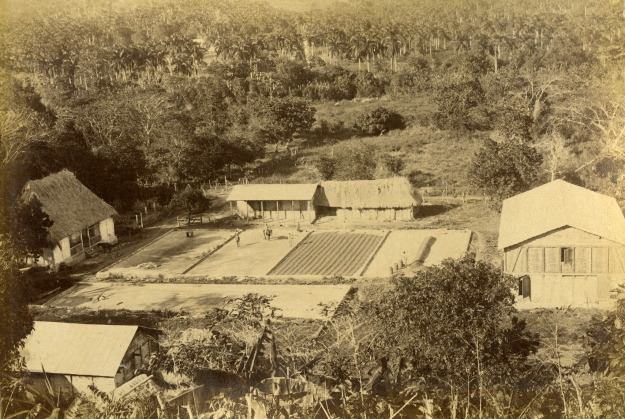
Cafetal Santa Rita
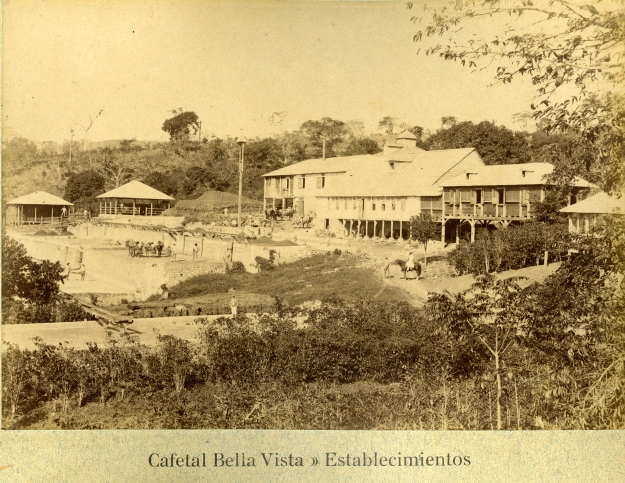
Cafetal Bella Vista (owned by Jean Begué)
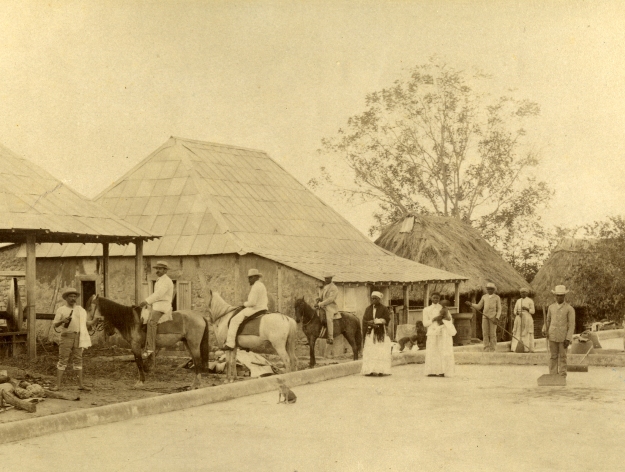
Cafetal San Cornelio

Cafetal San Dionicio (detail)
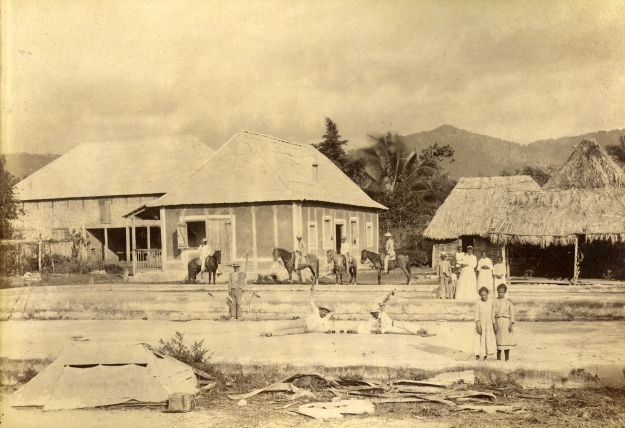
Cafetal San Dionicio

Cantina de Jesus Navaro

Cafetal Grignon

Cafetal la Güira
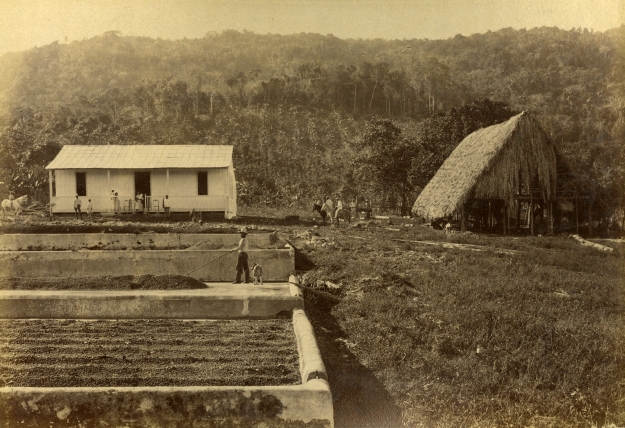
Cafetal Silencio
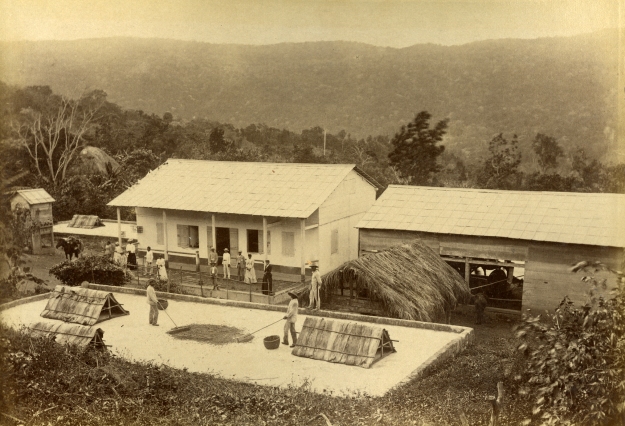
Cafetal la Deseada
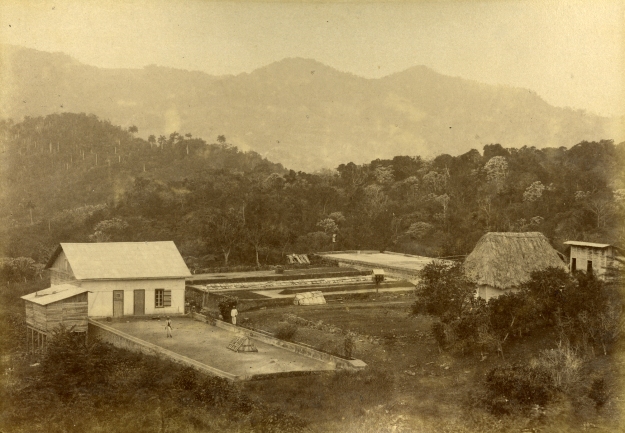
Cafetal Dios Ayuda (owned by Miss Philipps).
Most of this cafetales were small plantations, with less than 200 acres of cultivated land. Typically, plantations included the owner’s house, terraced drying floors, production areas for milling and roasting, and workers’ quarters.
The entire area of Yateras, and these nowadays ruined plantations, have been inscribed on the UNESCO World Heritage List in 2000.
The UNESCO website states, concerning the integrity of the area : “The Landscape of the First Coffee Plantations in the Southeast of Cuba has survived intact primarily due to the fact that the area was mostly abandoned in the early 20th century as this region’s traditional coffee growing techniques were increasingly unable to compete with new methods adopted elsewhere in Latin American. The large area included within the inscribed property, of 171 plantations in over 800 square kilometres, has permitted the preservation of a cultural landscape for coffee production from the agricultural level, to its processing, and the roads, trails and bridges that linked the product to market. Individual plantations include the owner’s house (often based on Basque traditions), aqueducts, flourmills, fermentation tanks, drying sheds, and barracks.
Current threats to the inscribed property are primarily due to its status as a largely abandoned archaeological site and the reclamation of the landscape by nature. Efforts have been made to clear and fence plantations in order to protect them from intrusions. The region is an active tectonic zone with a history of earthquakes. In future, this area may come under increased threat from uncontrolled tourism and the exploitation of natural resources although currently accessibility to the majority of the cultural properties is very limited due to its isolation. Additional potential threats to the site are the possible effects of climate change on coffee plantations, particularly drought.”
http://grimh.org/index.php?option=com_content&view=article&layout=edit&id=746&lang=fr
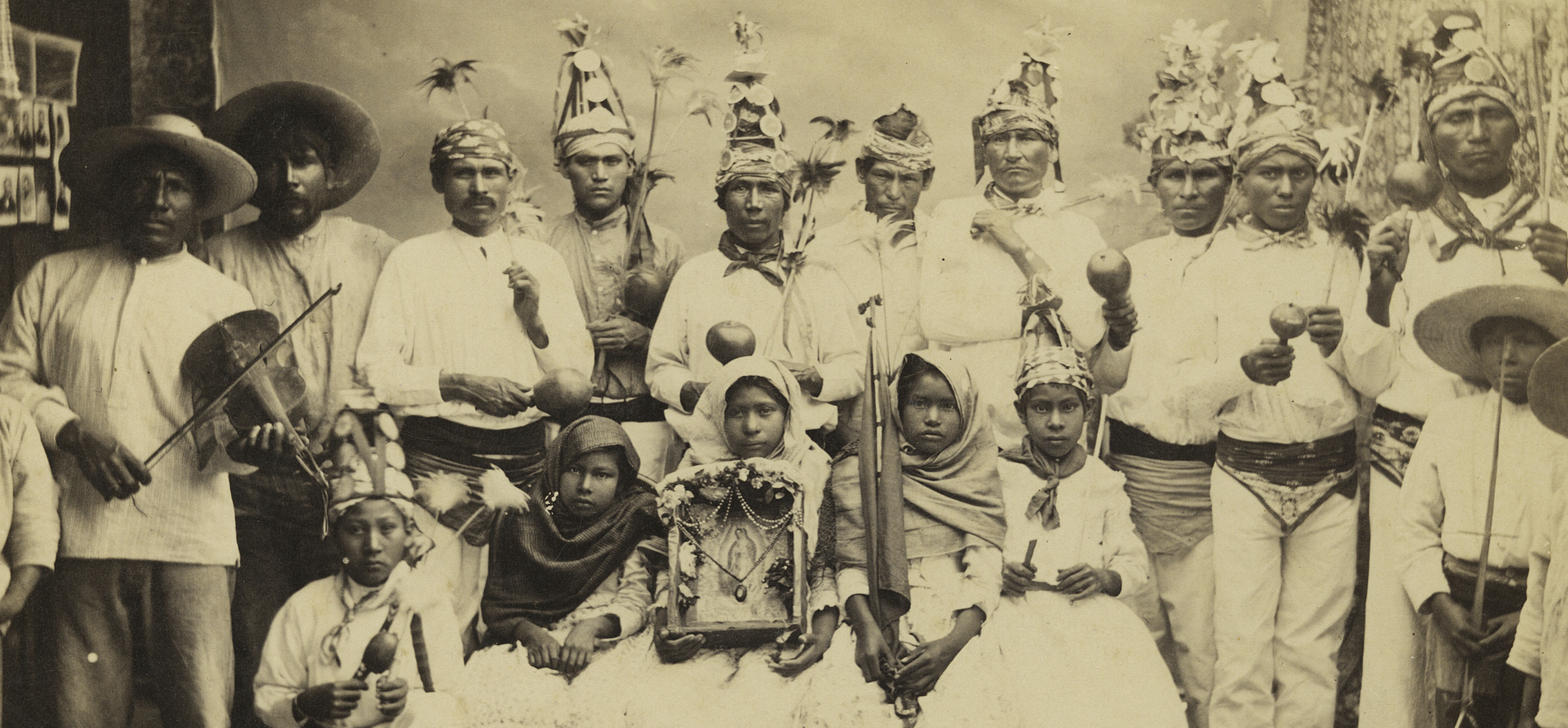
This seems to be an impressive album, documenting an important aspect of Latin American — and global — agricultural history. Please keep it intact for future generations.
I sure will keep it intact. Muchas gracias for the kind comment.
Hello
Could you change the link to Grimh (Hargous brothers) ?
https://www.grimh.org/index.php?option=com_content&view=article&layout=edit&id=746&lang=fr
regards
jcs